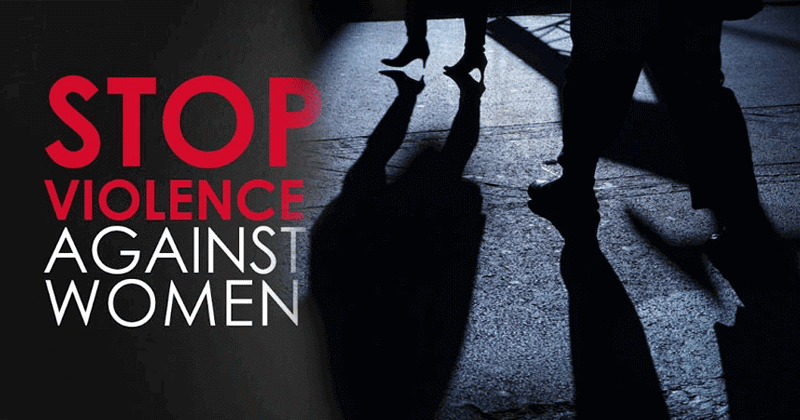
How safe are the women in India or any other country for the matter of fact? Are we safe despite the numerous awareness, laws & schemes? Here is what the survey says.
India has been ranked the most dangerous country for women by a global survey conducted by the Thomson Reuters Foundation. After the foundation released its findings today, questions are being raised at women safety measures taken by the central and state governments and how they have failed to make India a safer country for women. The poll was conducted by consulting 550 gender experts from across five continents to compile a list of the most dangerous countries for women. Carefully drafted questions were put forward to academics, health workers, policymakers and journalists among other respondents. Their responses were then recorded to compile the list where India has the dubious distinction of being the front-runner.
While the survey ranks war-plagued countries Afghanistan and Syria, second and third respectively, Somalia takes the fourth and Saudi Arabia, the fifth position on the list of five most dangerous countries for women. While nine out of the ten countries on the list are in Asia, the only western country to find mention in the list is the United States which has been ranked at number 10. In a similar survey conducted by the foundation about seven years ago, India was ranked at number four while Afghanistan, Democratic Republic of Congo, Pakistan, and Somalia were the other four countries that made the list.
In its report, the foundation has cited the high risk of sexual violence among other things as to why India has topped the list. Also highlighted in the report is the high probability of women being forced into human trafficking in India which sheds light on how law enforcement and judiciary have failed to tackle the menace even after India ranked at number one with respect to trafficking in the previous report seven years ago. Women in India are at a high risk of being thrust into trafficking and forced labour for purposes of sexual slavery, domestic work and even forced marriages, states the survey report.
Many regressive traditions in India also account for a massive impact on women, said the survey while citing multiple instances of genital mutilation, domestic abuse, child marriage, and acid attacks. The survey also recounts figures by the National Crime Records Bureau (NCRB), asserting that law enforcement agencies in India are approached with complaints of close to 100 sexual assaults every single day.
“World leaders vowed three years ago to eliminate all forms of violence and discrimination against women and girls by 2030, allowing them to live freely and safely to participate equally in political, economic and public life. But despite this pledge, it is estimated that one in three women globally experience physical or sexual violence during their lifetime,” the foundation said.
READ ALSO: Rahul Gandhi attacks PM Narendra Modi over women’s safety issue,says “What a shame for our country!”
The foundation also identified six key parameters where India fared poorly.
Healthcare: Healthcare includes access to specialist doctors like optometrists and dentists with expertise in treating diseases and dealing with trauma. India was ranked the fourth worst on healthcare, only above Afghanistan, Syria and Somalia.
Gender discrimination: This includes discrimination in employment, an inability to make a livelihood, discriminatory land, property or inheritance rights, lack of access to education and lack of access to adequate nutrition. On this front, India was ranked the third worst, behind Saudi Arabia and bottom-placed Afghanistan. Pakistan and Bangladesh also featured in the top 10.
Cultural traditions: It is this parameter that affected India’s position the most. India was ranked the worst country in the world for women as far as cultural traditions are concerned, even worse than Afghanistan, Somalia, Pakistan and Saudi Arabia. The researchers examined cases of acid attacks, female genital mutilation, child marriages, forced marriages, stoning, physical abuse and mutilation as forms of punishment or retribution, as well as female infanticide.
Sexual violence: India was also the worst-ranked State in terms of sexual violence, which includes rape as a “weapon of war”. It also includes domestic rape, incidentally, something that the Supreme Court had ruled cannot be considered a criminal offence. It includes lack of access to justice in a rape case, sexual harassment and coercion into sex “as a form of corruption”. While the Democratic Republic of Congo was ranked the second-worst, the United States surprisingly came in third from bottom.
Non-sexual violence: This includes violence against women, but only those cases that don’t fall under the category of sexual crimes. They include domestic, physical and mental abuse. India was the third-worst country in the world, only behind Syria and Afghanistan. The US was in the sixth position.
Human trafficking: Thomson Reuters defined human trafficking as “domestic servitude, bonded labour, forced labour, forced marriage and sexual slavery”. This is another criterion that critically hurt India — the country fared poorly on this front, being ranked the worst in the world behind Libya, Myanmar, Nigeria and Russia. Nepal, Bangladesh and Pakistan also rank in the bottom 10. Libya, Nigeria and Russia were the only non-Asian countries on the list, which also included the Philippines, Thailand and Afghanistan.

Post Your Comments